13Thorny locust
Gleditsia triacanthos
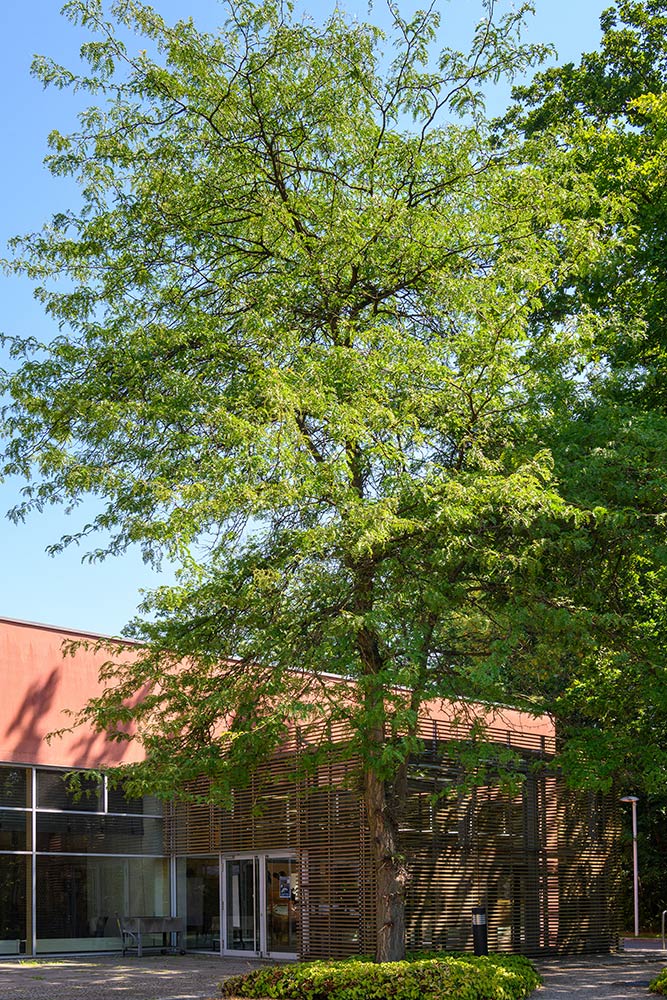
Tree 13 on the tour is a Thorny locust or thorny honeylocust, botanical name Gleditsia triacanthos, of the Caesalpiniaceae family. It stands in front of the main entrance of the Mensa.
Characteristic are thorns which can reach over twenty centimeters in length. They are found in clusters on the trunk and thick branches. On growing irregular and twisted branches there are three on each bud, hence the Latin epithet triacanthos for three-thorned. It owes its generic name, Gleditsia, to the German botanist Johann Gottlieb Gleditsch, who introduced it to Europe.
The thorny locust is a deciduous tree that reaches up to 20 meters in height, with a loose crown about 2 to 5 meters wide. Its leaves alternate and are stalked, single to double-pinnate, 15 to 30 centimeters long, and light green. In October, they take on a golden yellow fall color. The flowers appear between May and June as rather inconspicuous racemes about seven centimeters long. When they open in June, their honey scent attracts many species of butterflies and insects. The flowers bear crescent-shaped, reddish-brown pulses 20 to 30 centimeters long, some of which are twisted in a spiral shape. They are edible and remain on the tree until winter.
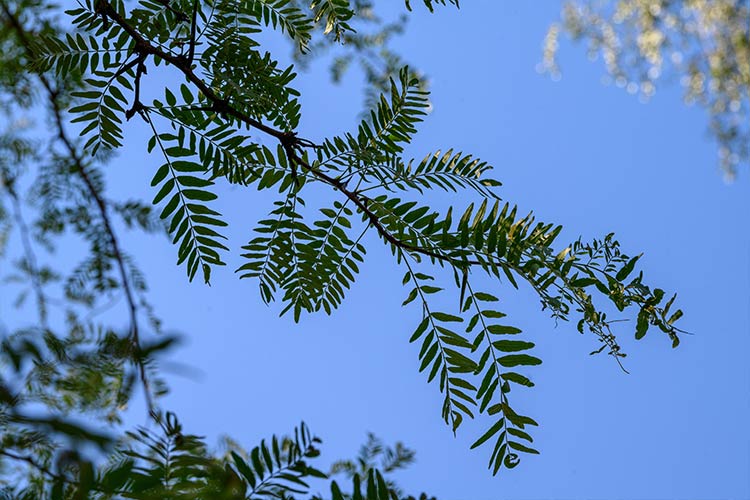
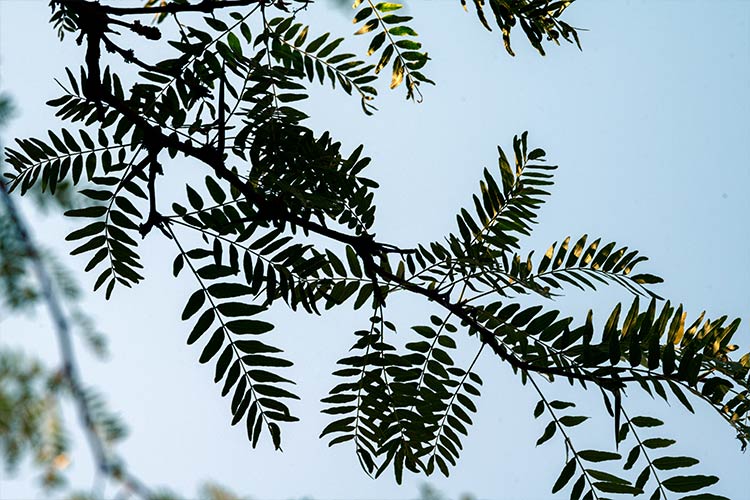
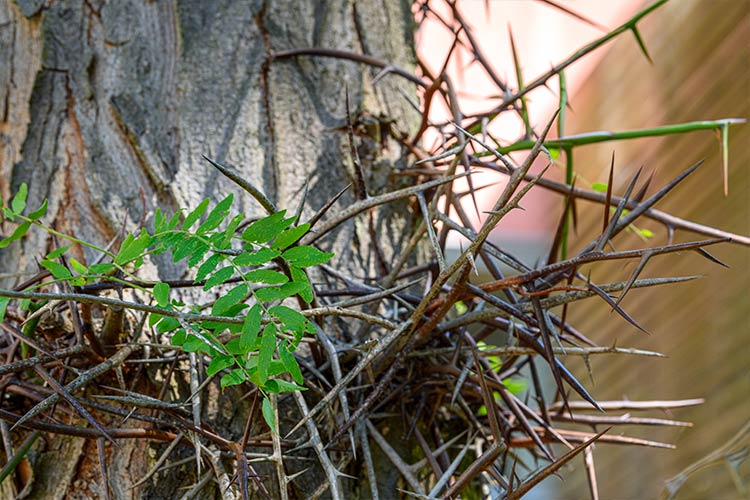
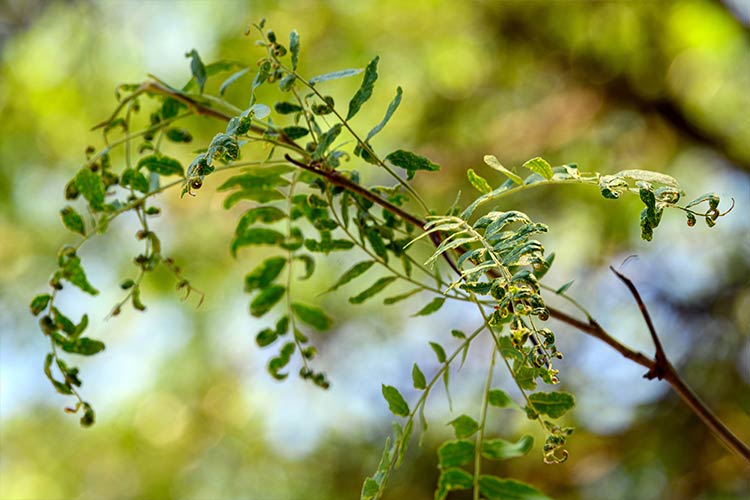
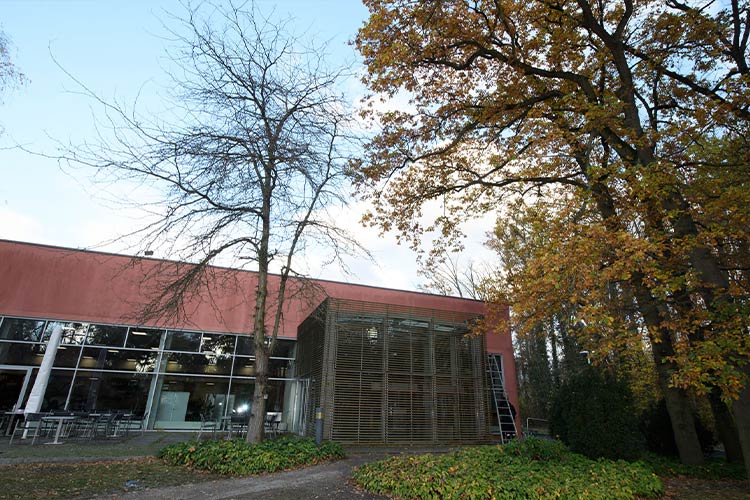
The original region of distribution of the thorny locust is North America. Today it thrives mainly in gardens and parks; in southern Europe it can sometimes be seen in the wild.
The bark is reddish at first and turns olive-brown with age. Finally it becomes greyish with deep furrows. The tree has thick, deep roots and prefers moist, nutrient-rich, well-drained soils, but will tolerate other soils. It does well in sunny locations sheltered from the wind and can tolerate temperatures down to about minus twenty degrees Celsius.
The seeds are edible raw and cooked. They contain up to 30 percent sugar. When young, they taste like raw sugar snap peas. In their native North America, they are actually quite popular in people’s diets and are prepared like peas or lentils. The ripe seeds contain mucilage that can be used as an emulsifier for ointments. The pod juice is also said to have antiseptic effects, and alcoholic extracts are said to have oncostatic effects, which is currently being investigated. Unlike the seeds and fruits, the leaves are poisonous, with a main active ingredient of alkaloid triacanthine. This can cause convulsions, as well as respiratory and circulatory disorders. However, the leaves also contain tannins and were used in traditional remedies as a spasmolytic for bronchial asthma.